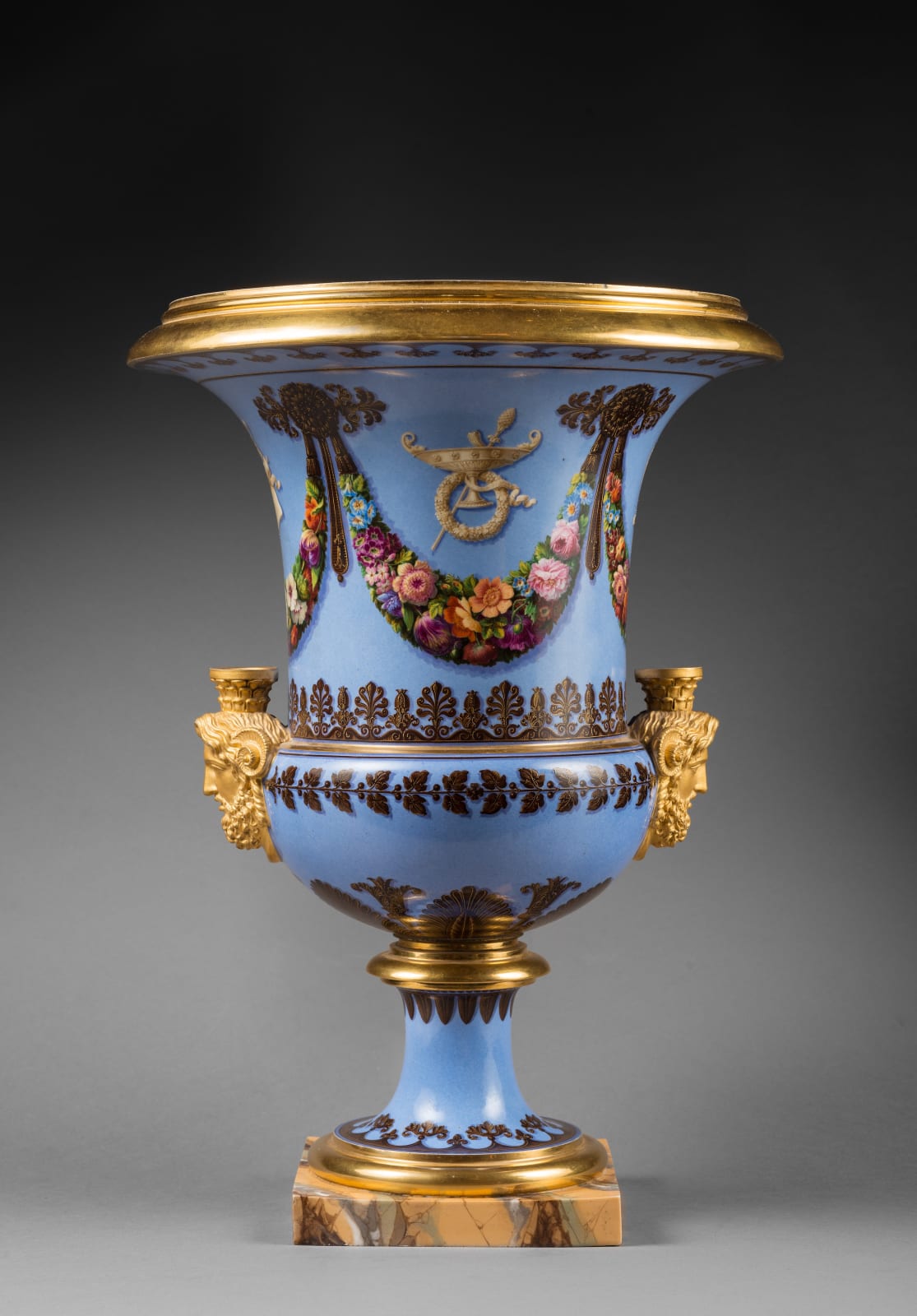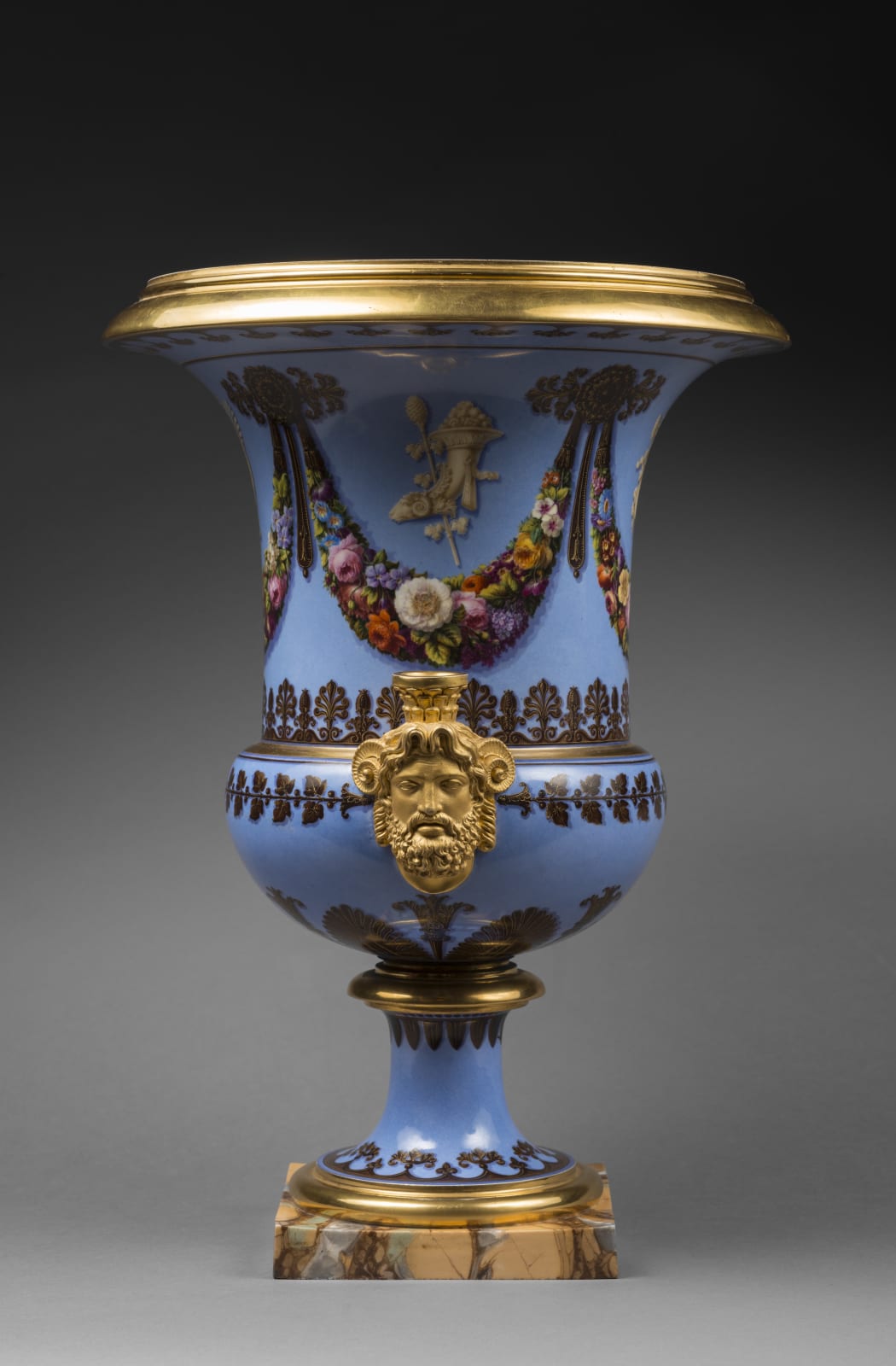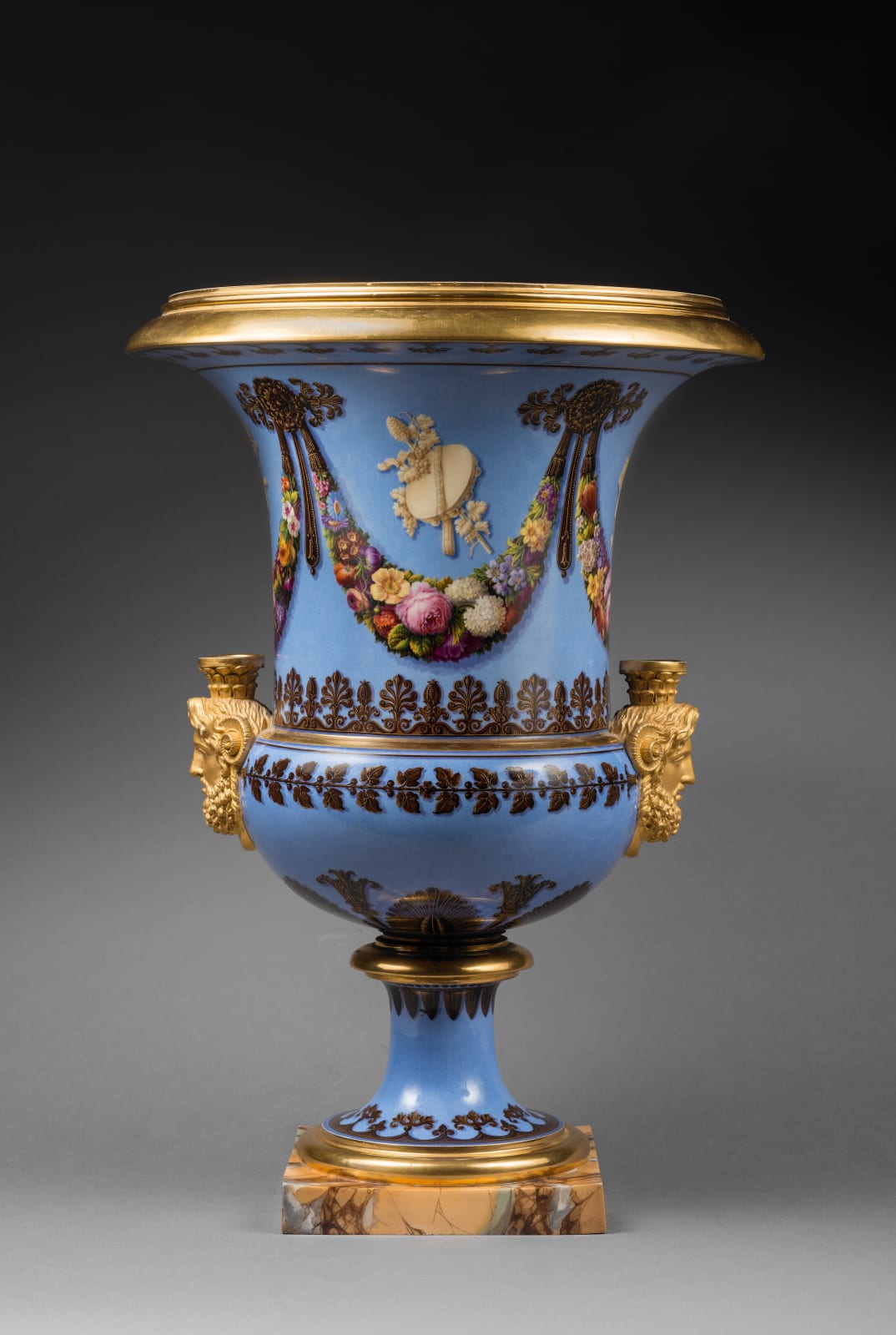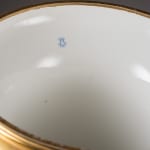Sèvres
Further images
Provenance
The duc d'Orléans, the future King Louis-Philippe, purchased at the Exposition des Produits de l'Industrie Française, 1823 for the Palais Royal, Paris.
Exhibitions
The Exposition des Produits de l'Industrie Française, 1823.
Literature
There is a preparatory drawing for these vases in the Sèvres Museum.
An important pair of Restauration hard paste Sèvres Medici vases, each bearing the Sèvres mark below, both of krater form with a gilded rim around the neck above a bleu agate ground ornamented with abundant polychrome painted floral swags interspersed above by an urn, wreath and thyrsus, the lower body with a palmetted border flanked by a pair of bearded male heads supporting miniature vases, the spreading circular foot with classical borders and gilded bands on a square marble base
Paris, date circa 1823
This magnificent pair of Sèvres vases were exhibited at the Exposition des Produits de l'Industrie Française, 1823 where they were acquired by the duc'd'Orléans for his own residence at the Palais-Royal, opposite the Louvre. Louis Philippe d'Orléans (1773-1850), who reigned as the French monarch from 1830 up until his deposition in 1848, was a great patron of the arts and in particular took an active interest in the production of Sèvres. As such he purchased a large number of pieces both before and after his coronation, counting among his many acquisitions a number of other vases as well as orders for diner services for each of his residences. As noted a drawing for the present vases is preserved at the Sèvres Museum. Their overall form recalls the ancient Medici vases and other classical kraters, which were very fashionable during the late eighteenth century as an expression of Neo-Classical design. First made at Vincennes, Sèvres began producing Medici vases in about 1780 and continued to do so well into the 1900s but particularly during the first few decades.
With their floral decoration, the present vases recall as earlier Sèvres vase from c. 1798-1802 now in the Musée des Arts Décoratifs, Paris, which portrays on the other side a scene from the Toilette of Venus. As here it features floral garlands and classical borders as well as satyr mask heads to either side, however here the bearded male heads support miniature vases, which was very unusual. Another rare aspect is the beautiful lavender coloured ground known as bleu agate, which in contrast to the darker bleu nouveau or brighter bleu céleste, was more unusual and one of the new ground colours introduced during the early 1900s.
The Royal Sèvres Manufactory, founded in 1738, was originally based at Château de Vincennes by workers from Chantilly, to rival Meissen as the finest European porcelain factory. Initially producing only soft paste porcelain, it moved to Sèvres, west of Paris, in 1756 and up until the French Revolution enjoyed great repute and a virtual monopoly among French porcelain production. However the Revolutionary years proved especially difficult for the factory though it began to improve after the establishment of the Directoire in 1795. However its main recovery was due to Alexandre Brongniart (1770-1847), a mineralogist who was appointed Directeur in 1800.
His most significant decision was to abandon the production of soft-paste in favour of a new type of hard-paste porcelain. He also introduced a new range of richly toned pigments that could imitate the effect of oil painting, as is clearly evident here. Furthermore Brongniart also produced a new series of ground colours including as here bleu agate, as well as a chrome green, a beige called nankin and another that imitated tortoiseshell. Under Brongniart's direction, forms became simpler, which as here proved an excellent way to display the new colour ranges and skilled painted ornamentation.







